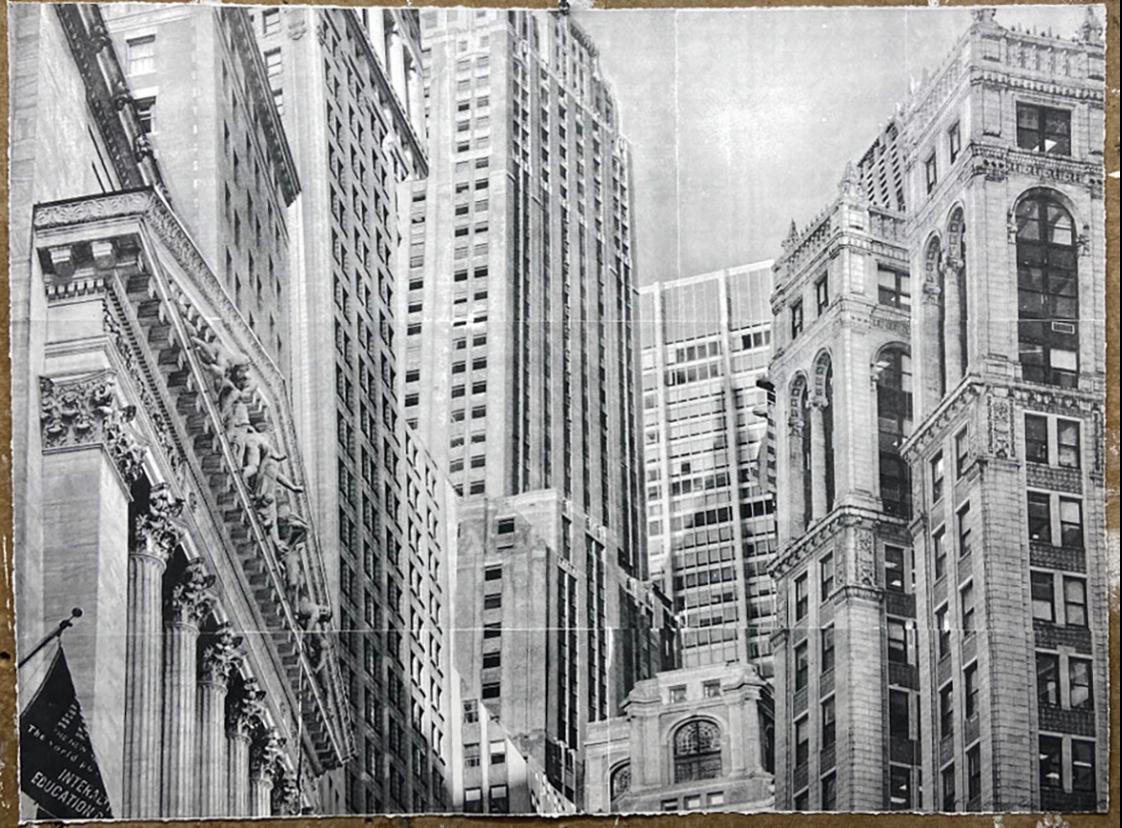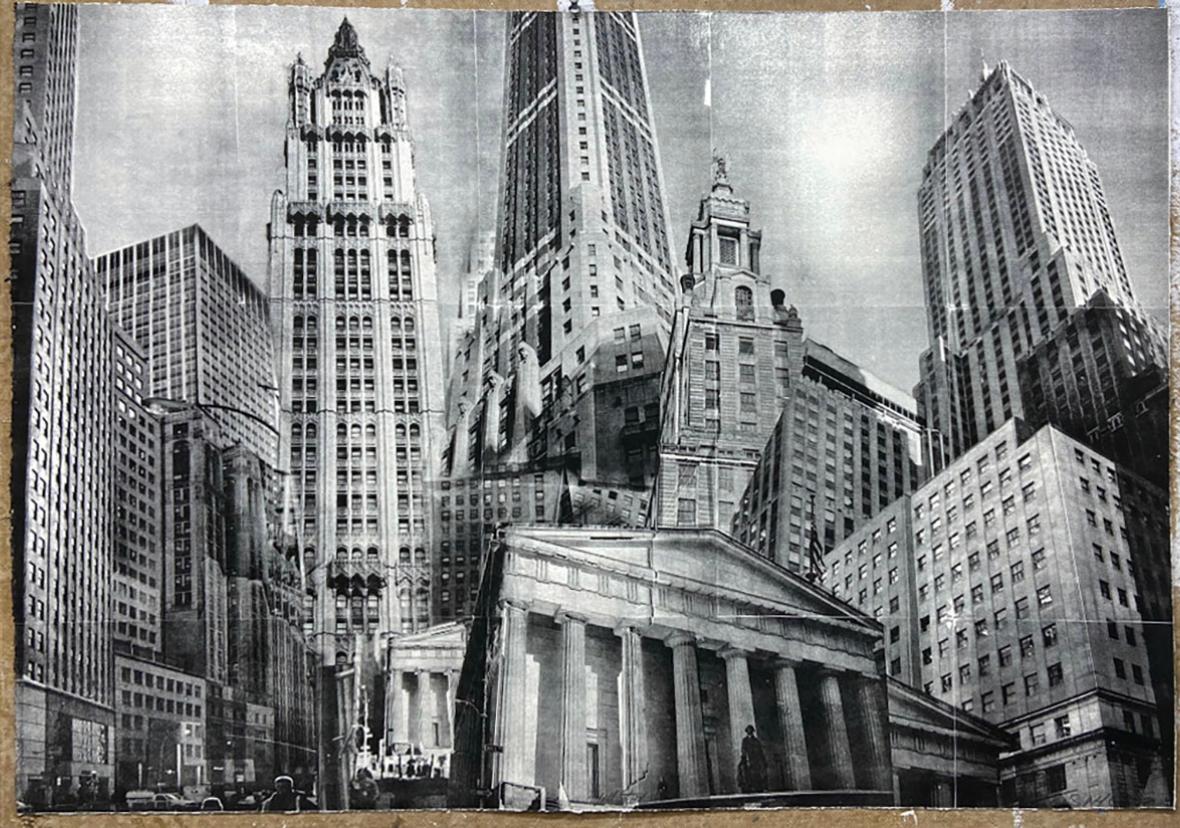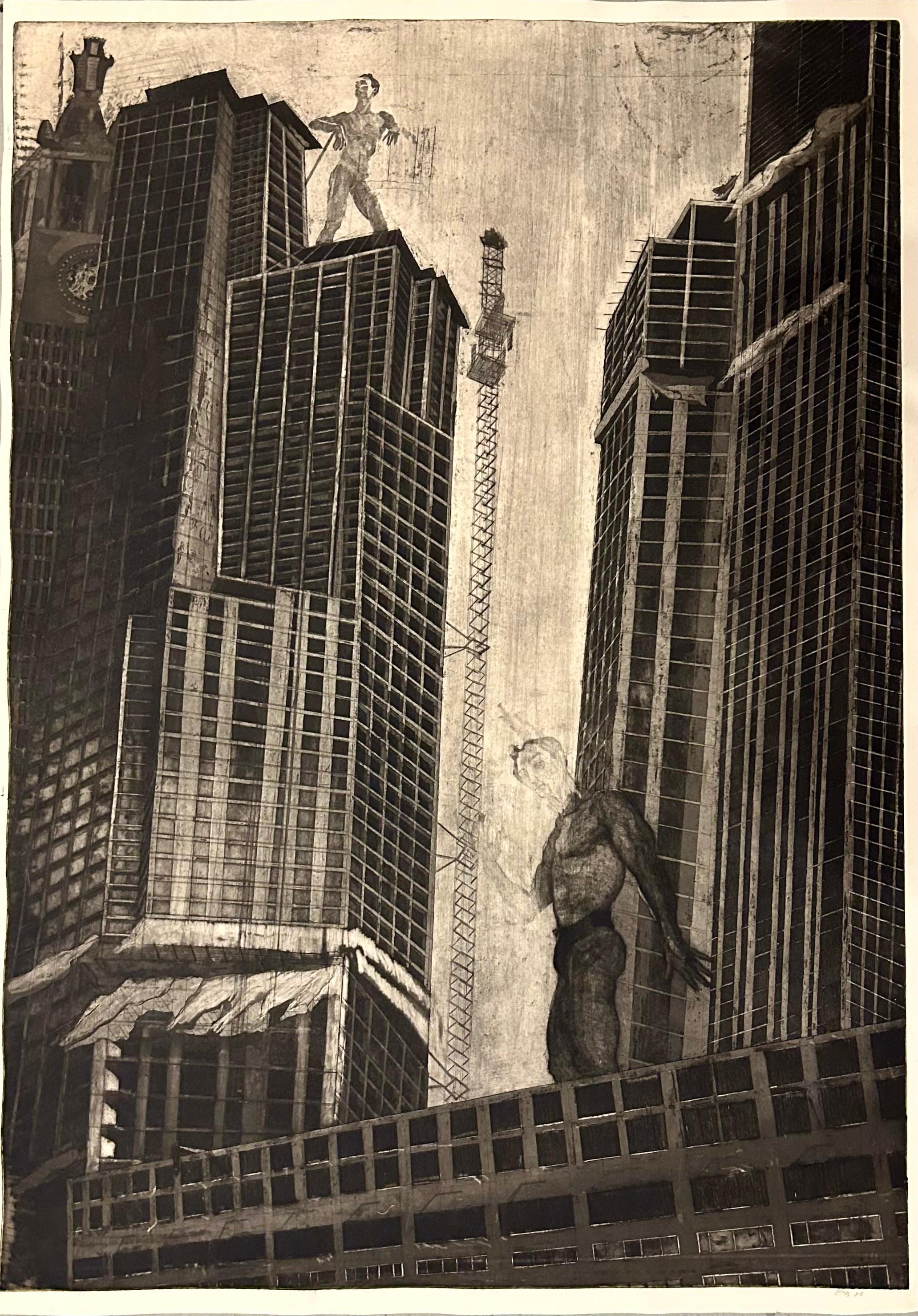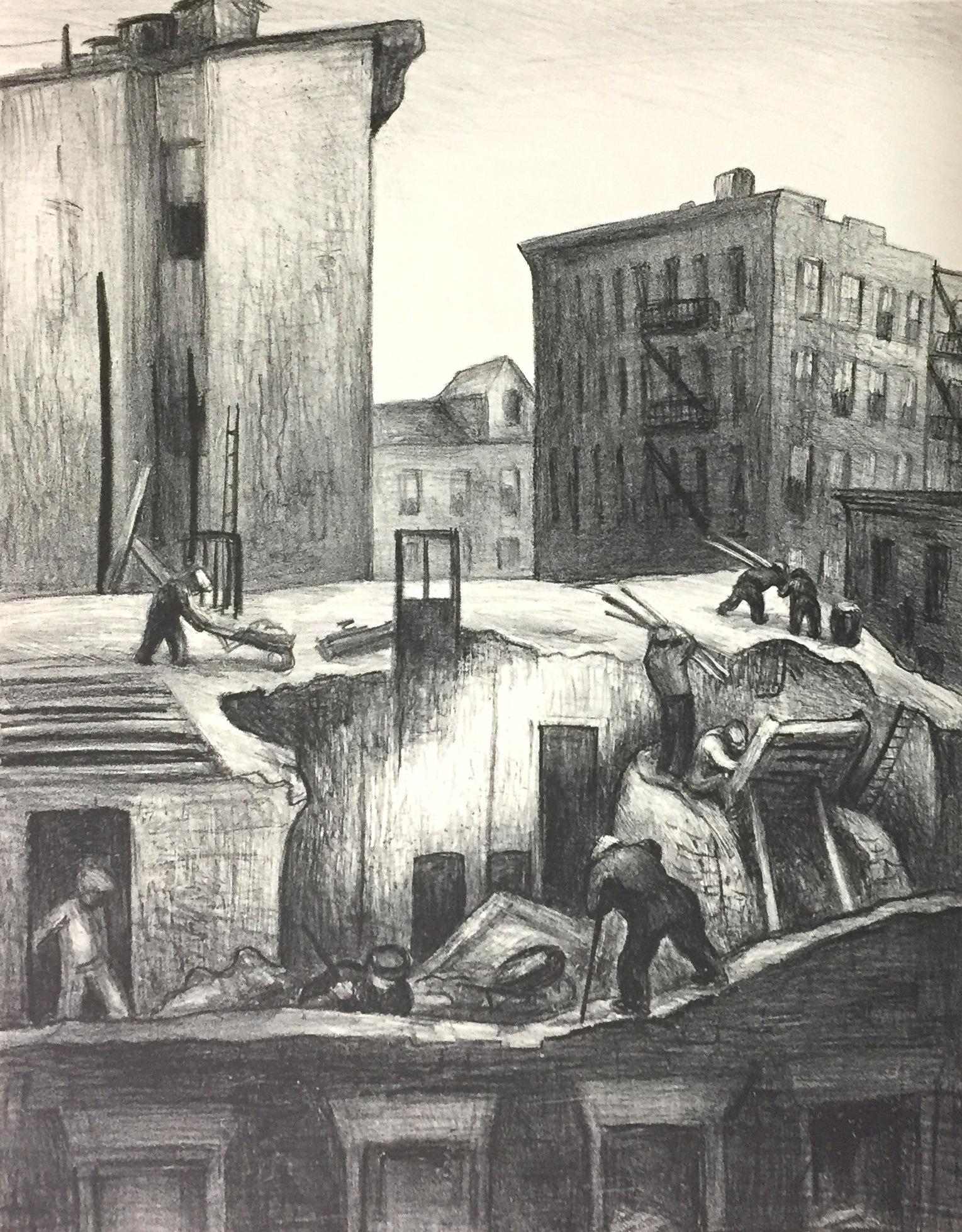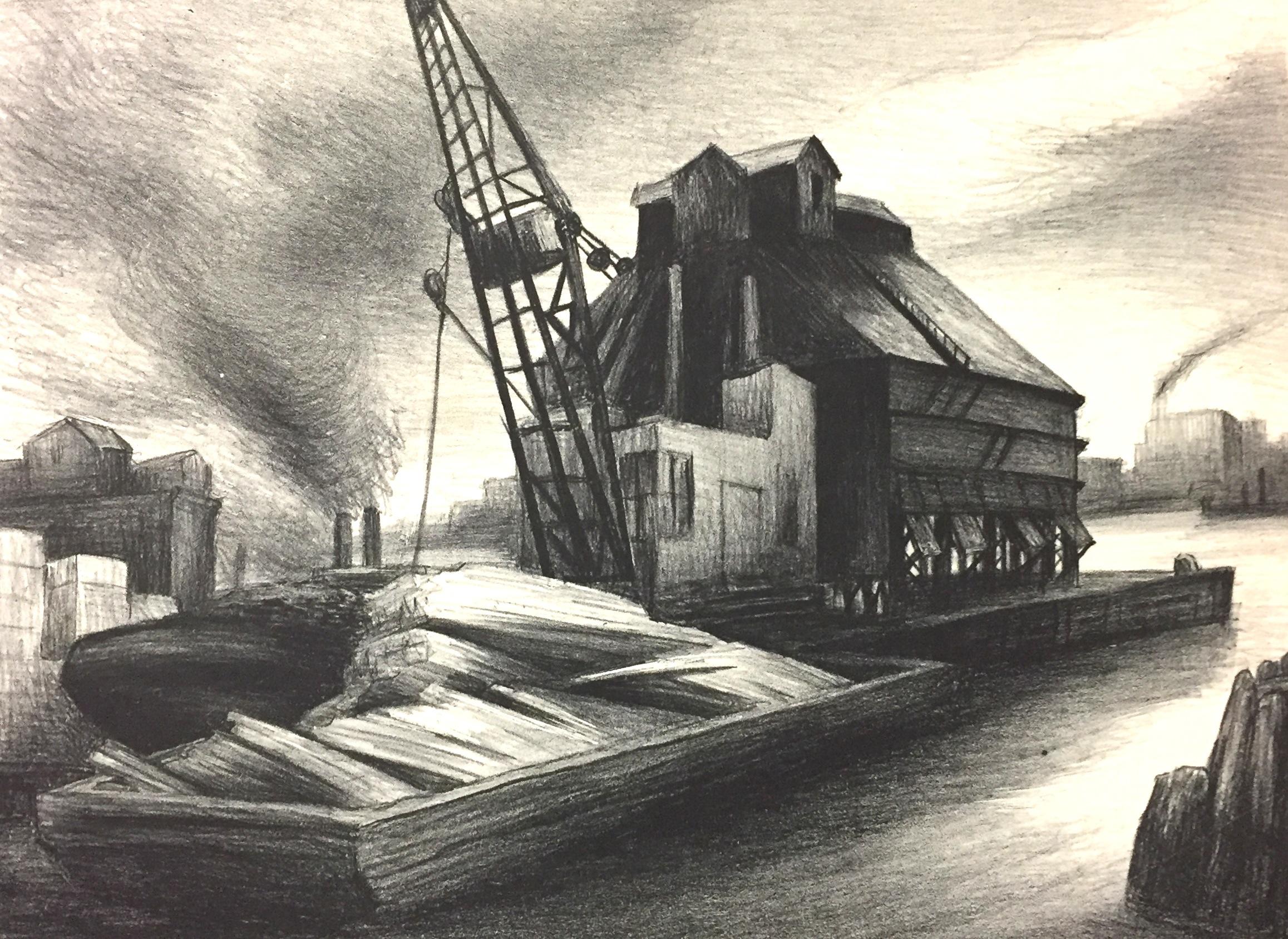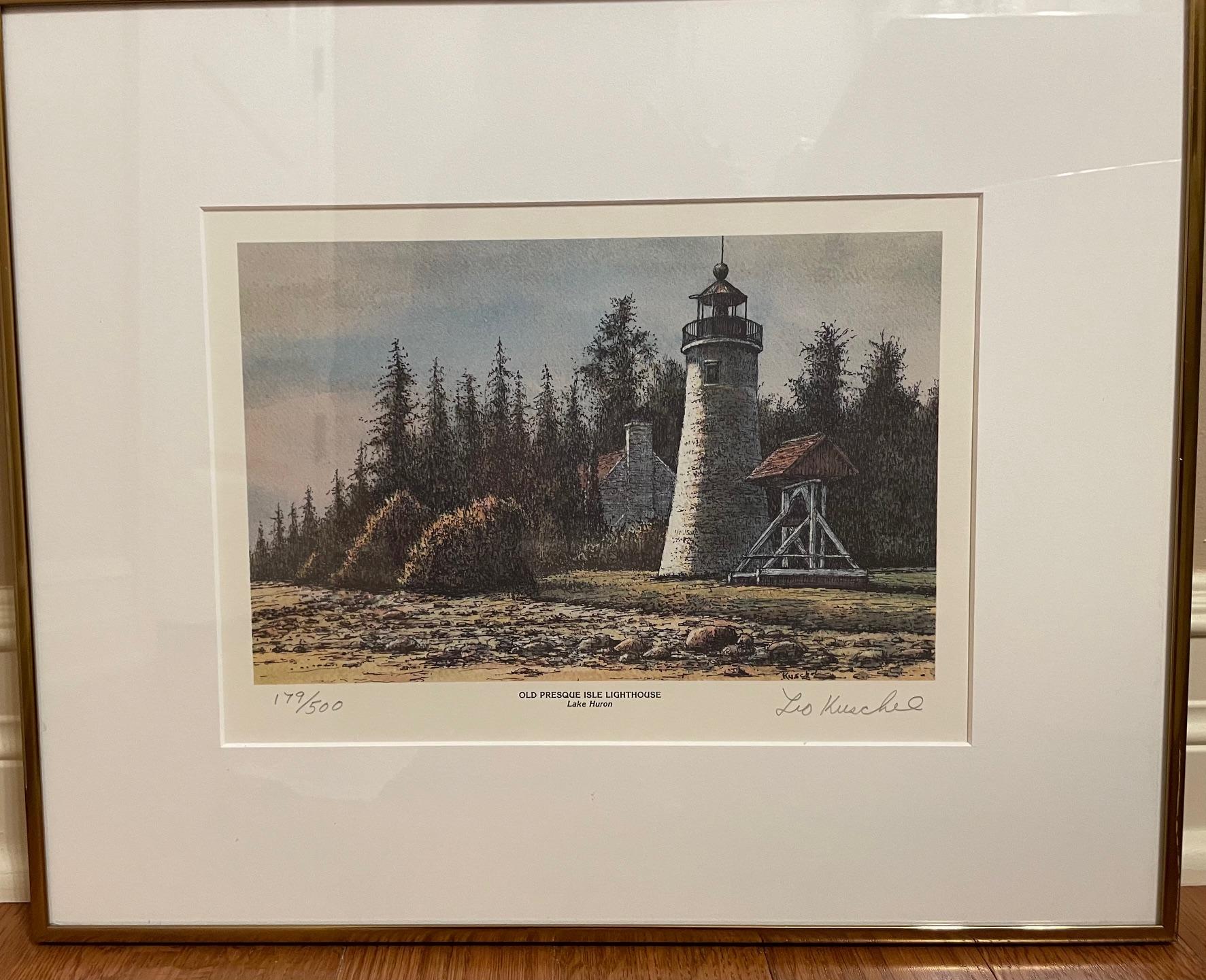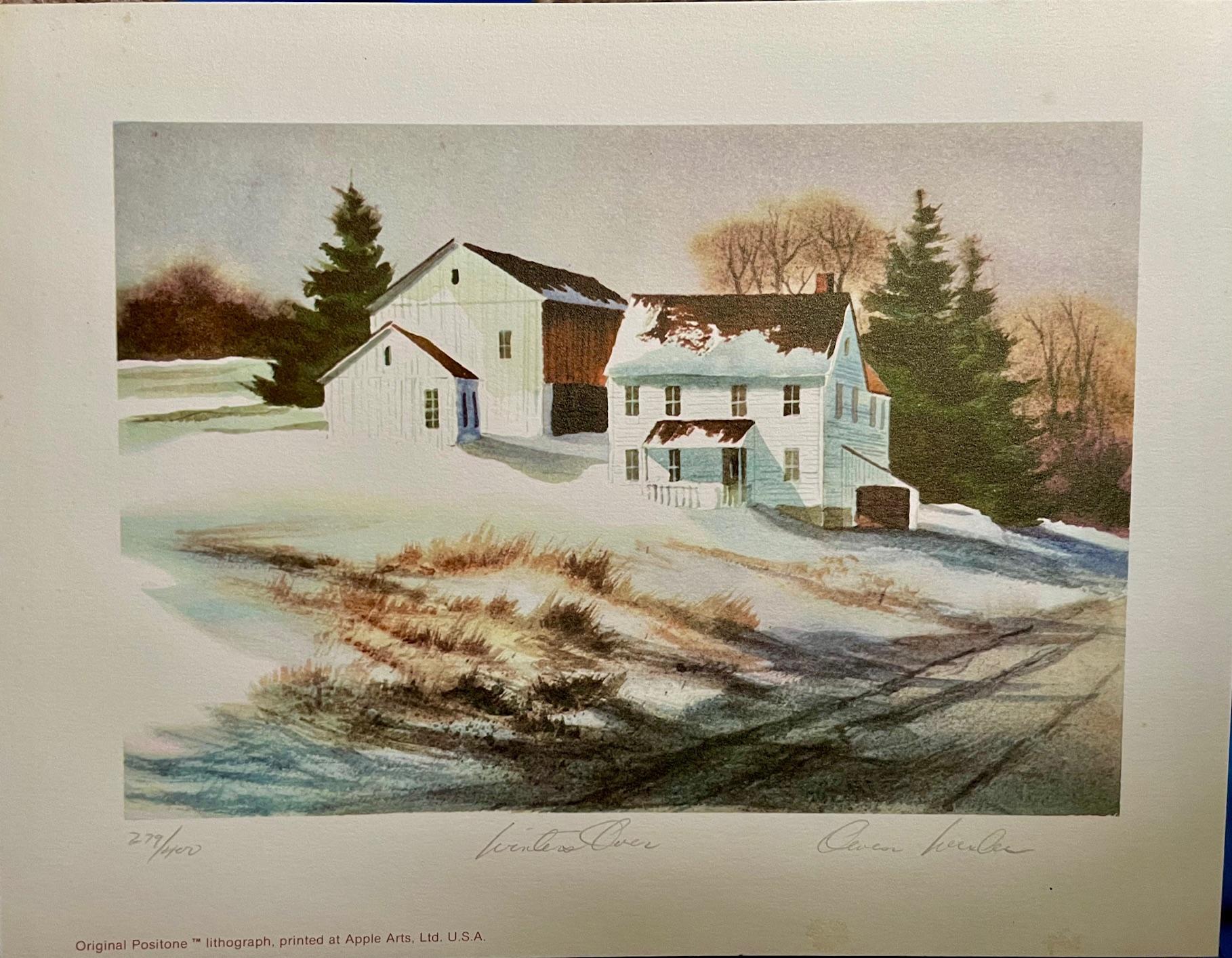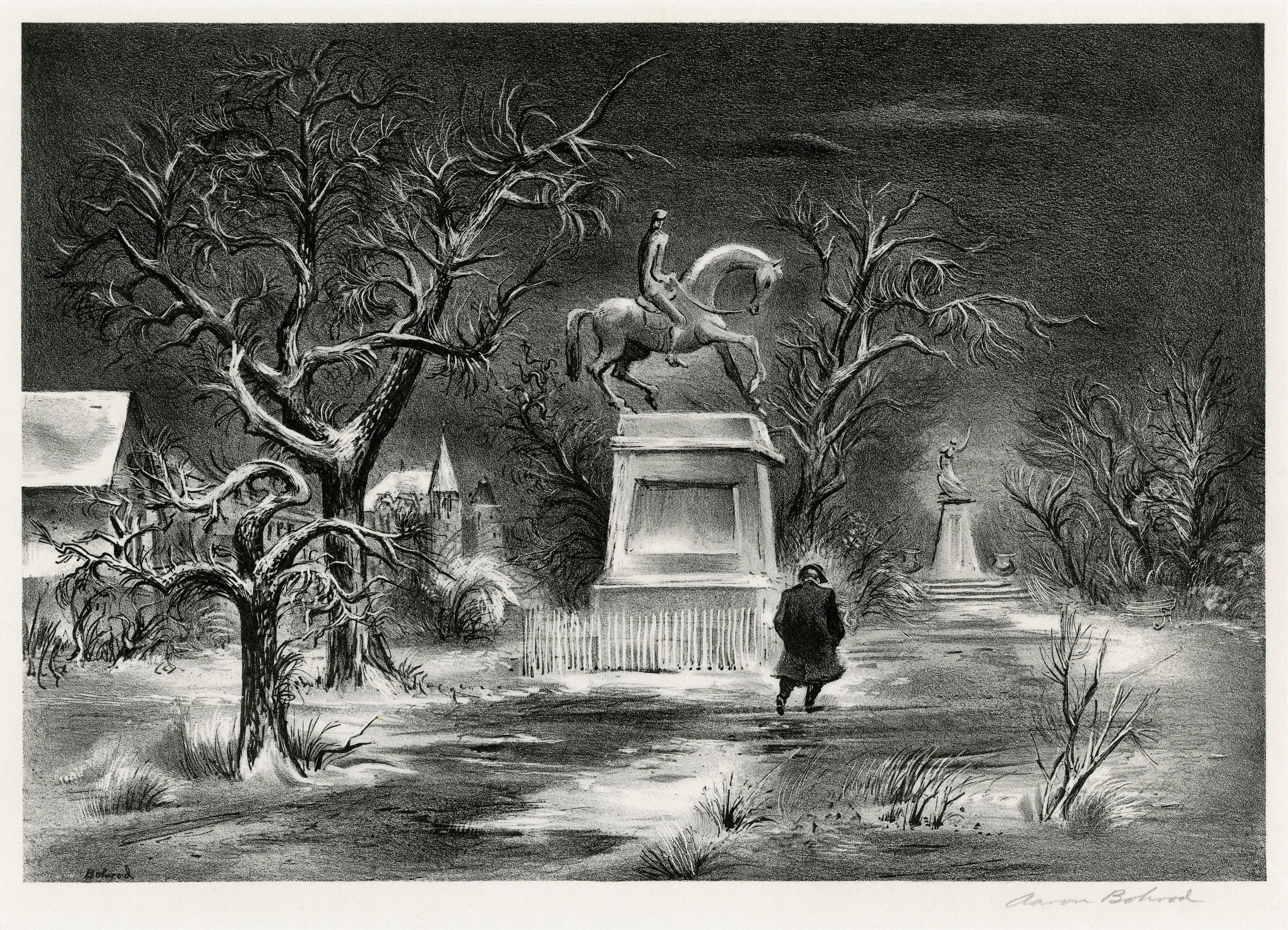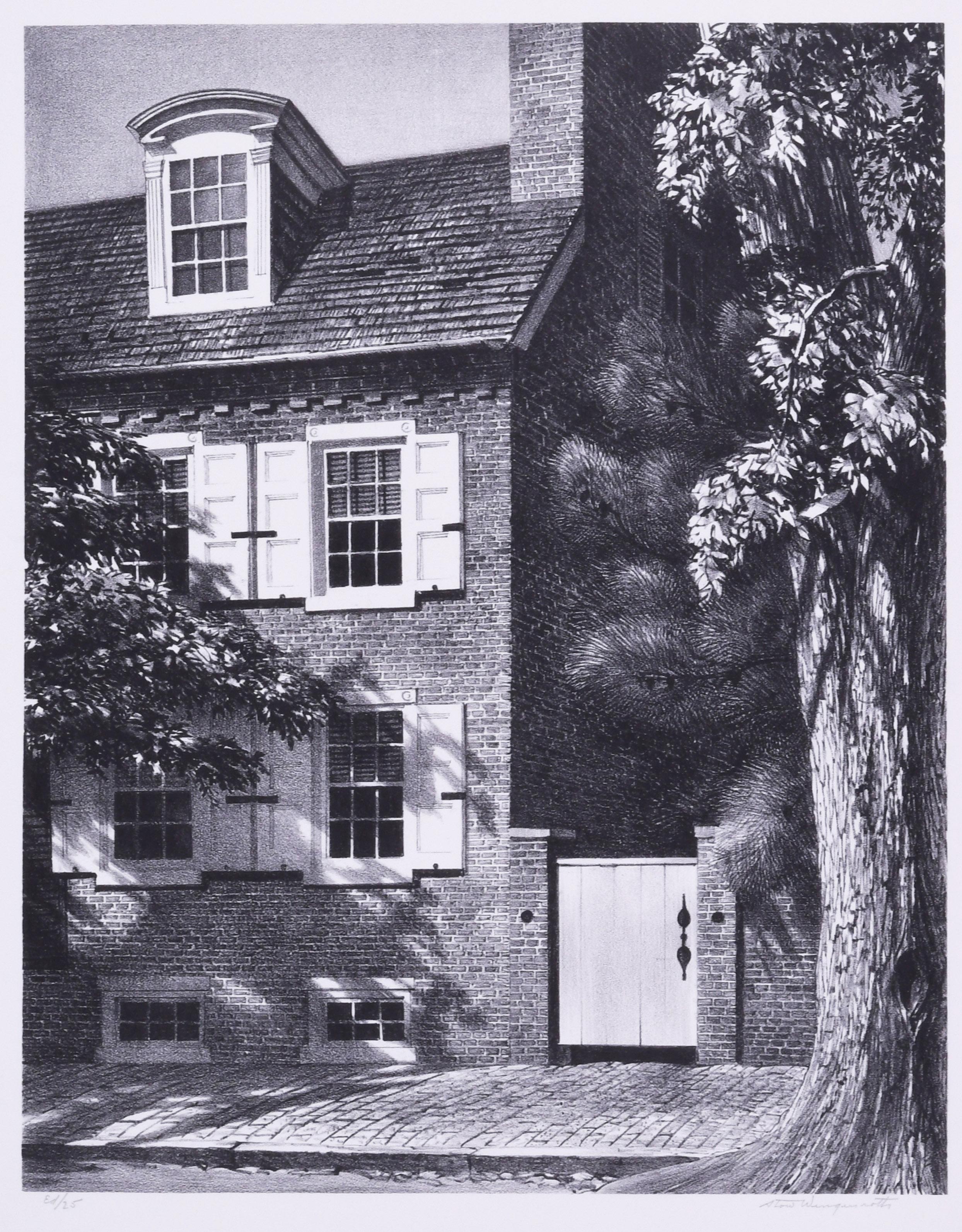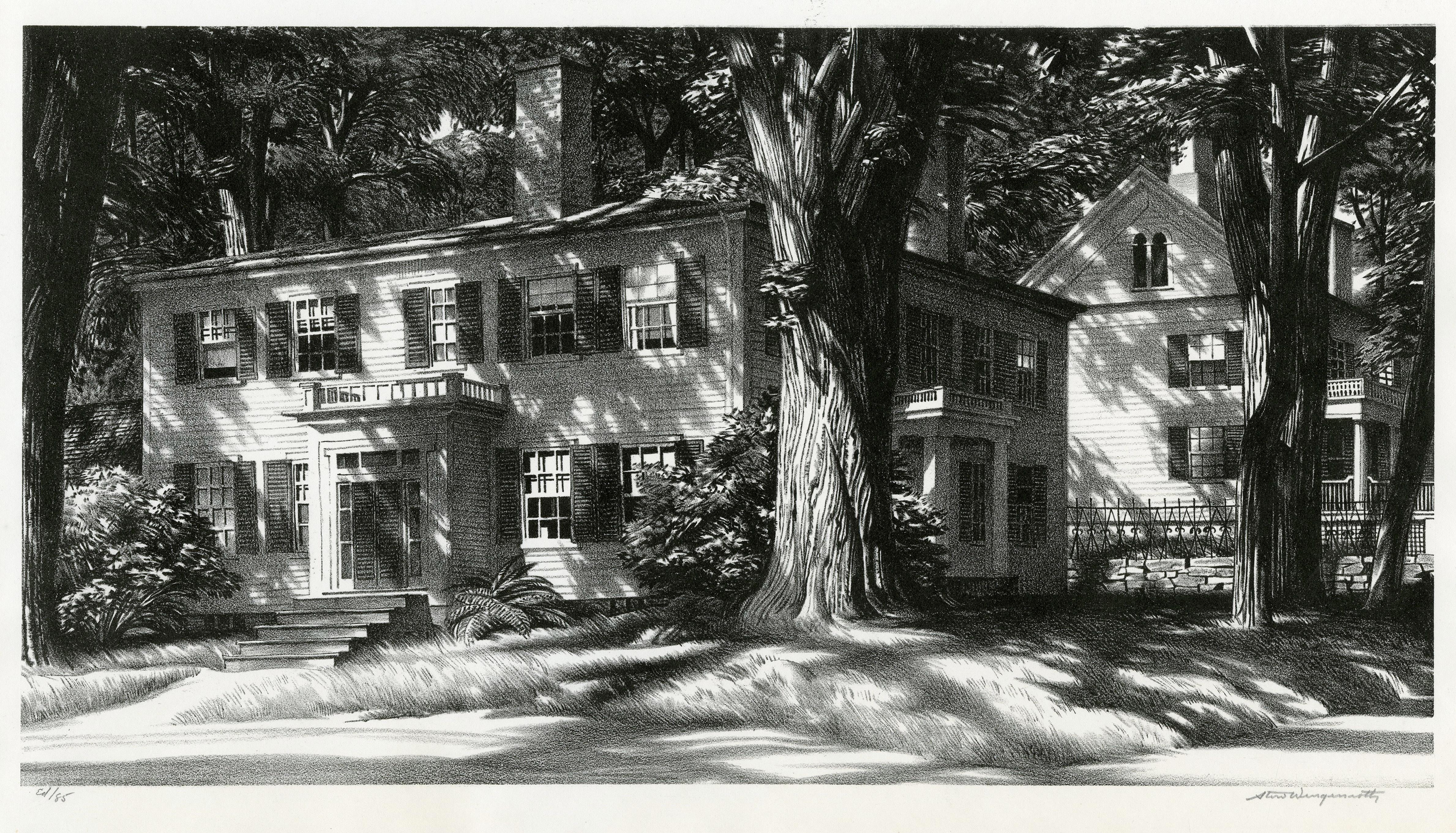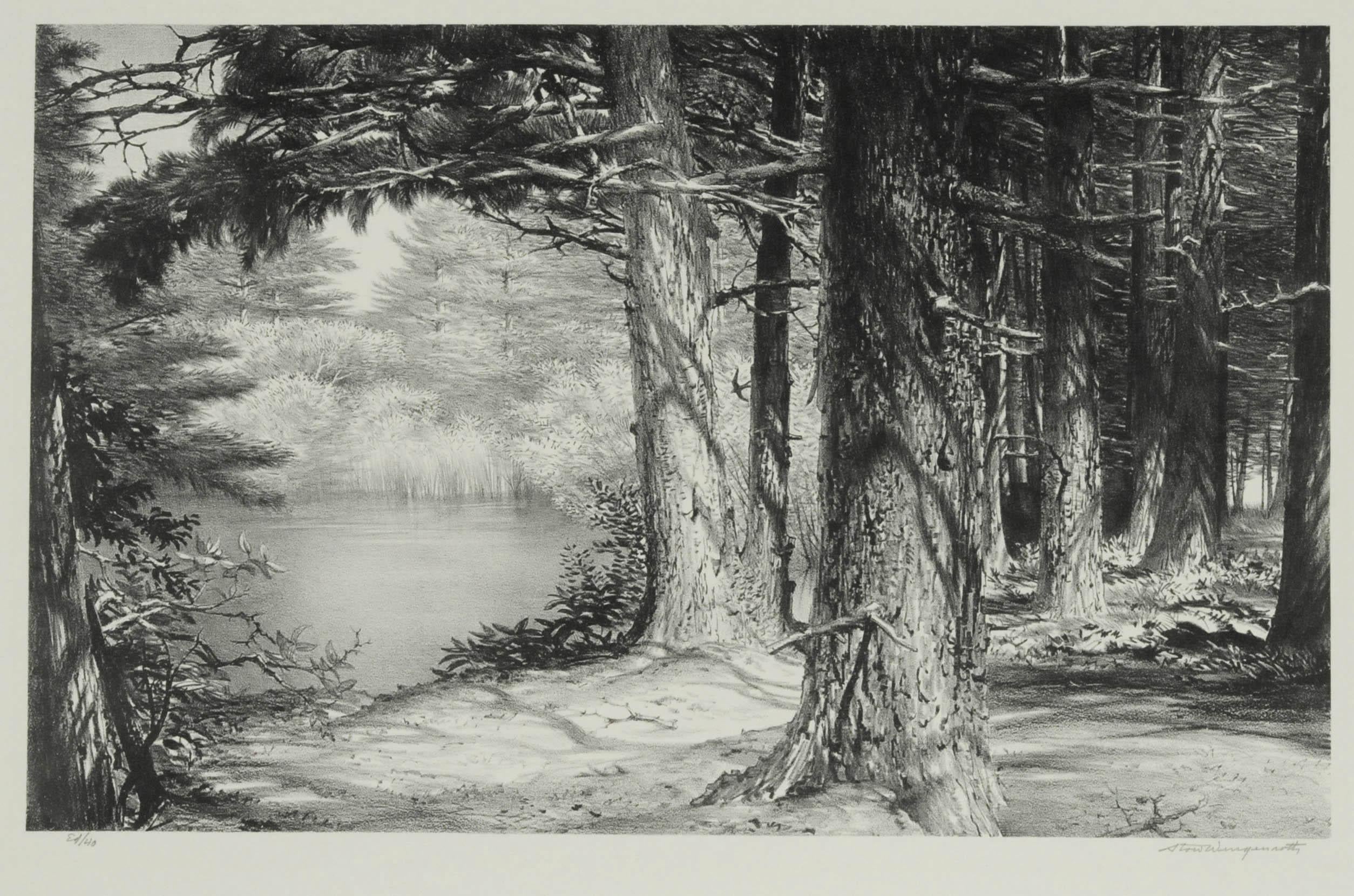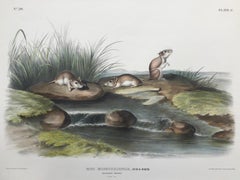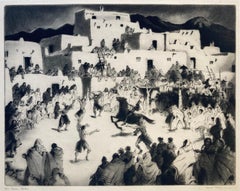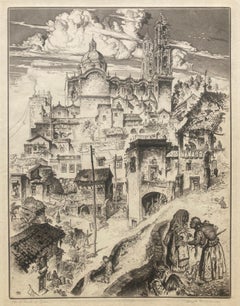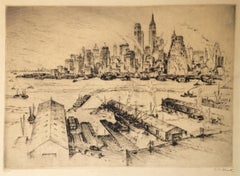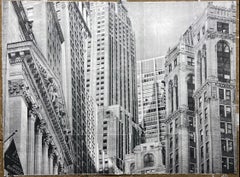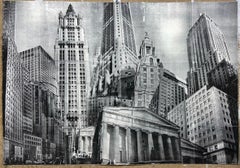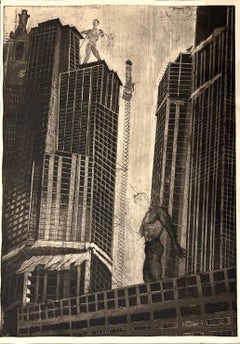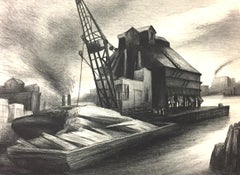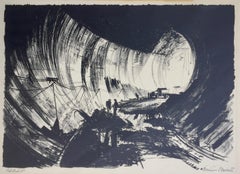
Interior View of Tunnel 1 - (Building of Hoover Dam)
View Similar Items
Want more images or videos?
Request additional images or videos from the seller
1 of 10
William WoollettInterior View of Tunnel 1 - (Building of Hoover Dam)c. 1932
c. 1932
Price:$600
About the Item
- Creator:William Woollett (1901 - 1998)
- Creation Year:c. 1932
- Dimensions:Height: 10 in (25.4 cm)Width: 14 in (35.56 cm)
- Medium:
- Movement & Style:
- Period:
- Condition:
- Gallery Location:Santa Monica, CA
- Reference Number:1stDibs: LU41135948302
About the Seller
5.0
Recognized Seller
These prestigious sellers are industry leaders and represent the highest echelon for item quality and design.
Gold Seller
Premium sellers maintaining a 4.3+ rating and 24-hour response times
Established in 1977
1stDibs seller since 2016
289 sales on 1stDibs
Typical response time: 1 hour
Associations
International Fine Print Dealers Association
Authenticity Guarantee
In the unlikely event there’s an issue with an item’s authenticity, contact us within 1 year for a full refund. DetailsMoney-Back Guarantee
If your item is not as described, is damaged in transit, or does not arrive, contact us within 7 days for a full refund. Details24-Hour Cancellation
You have a 24-hour grace period in which to reconsider your purchase, with no questions asked.Vetted Professional Sellers
Our world-class sellers must adhere to strict standards for service and quality, maintaining the integrity of our listings.Price-Match Guarantee
If you find that a seller listed the same item for a lower price elsewhere, we’ll match it.Trusted Global Delivery
Our best-in-class carrier network provides specialized shipping options worldwide, including custom delivery.More From This Seller
View AllMISSOURI MOUSE - Large Folio "The Viviparous Quadrupeds of North America" Pl.100
By After John James Audubon
Located in Santa Monica, CA
(After) JOHN JAMES AUDUBON (1785 - 1851)
MISSOURI MOUSE, 1846 - Plate 100 (C) No. 20
Lithograph with original hand coloring. From Audubon's "The Viviparous Quadrupeds of North America...
Category
1840s American Realist Landscape Prints
Materials
Lithograph
$600 Sale Price
20% Off
TAOS INDIAN JESTERS
By Gene Kloss
Located in Santa Monica, CA
GENE KLOSS (1903 – 1996)
TAOS INDIAN JESTERS, 1944
Etching and aquatint, Signed and titled in pencil. Edition 30. Image 11” x 13 7/8”, sheet 13 ¼ x 16 ½”. In very good condition sa...
Category
1940s American Realist Figurative Prints
Materials
Etching, Aquatint
TEN O'CLOCK in TAXCO - Large etching with Incredible Detail. One of a Pair
By Reynold Weidenaar
Located in Santa Monica, CA
REYNOLD WEIDENAAR (1915 - 1985)
TEN O'CLOCK IN TAXCO 1946 Etching and aquatint on paper Edition: An artist proof (#2) apart from an edition of unknown size Signed and titled in pencil. Image: 17" x 13"; Sheet: 19.75" x 15.75”. One of a pair of large format Mexican etchings...
Category
1940s American Realist Figurative Prints
Materials
Etching
MANHATTAN
By Anton Schutz
Located in Santa Monica, CA
ANTON SCHUTZ
MANHATTAN c 1940
Etching, signed in pencil, edition 100, no. 15/100. On thin simili-japan paper. Very slight toning around plate mark. Remnants of old tape on verso, s...
Category
1940s American Realist Landscape Prints
Materials
Etching
MORNING IN YOSEMITE
By Harold Lukens Doolittle
Located in Santa Monica, CA
HAROLD L. DOOLITTLE (1883 - 1974)
MORNING IN YOSEMITE c 1938
Aquatint, signed and titled in pencil by the artist. Plate size 13 3/8 x 9 3/4". Sheet 16 x 11 1/8" with deckle edges.
Doolittle was a renaissance man. His day job was as an engineer for the Edison Electric Co. But he produced an outstanding body of prints for 5 decades as well as photographs. His very rare arts and crafts furniture is highly sought after. He was a long time member and officer in the California Print...
Category
1930s American Realist Landscape Prints
Materials
Aquatint
LIGHT AND SHADE TAXCO - J. T. Arms Mexican Masterpiece with Striking Detail
By John Taylor Arms
Located in Santa Monica, CA
JOHN TAYLOR ARMS (1887 – 1953)
LIGHT AND SHADE TAXCO, 1946 (F. 394: (#2 from the Mexican series.)
Etching and aquatint signed and dated in pencil. Image 10 ½ x 13 5/8, sheet 14 1/...
Category
1940s American Realist Landscape Prints
Materials
Etching
You May Also Like
Wall Street 2, black & white 25.5" X 36" lithograph abstract urban street NYC
Located in Brooklyn, NY
Wall Street 2 - plate size 25.5 x 36 - printed on 100% cotton rag - edition 3/5
monochromatic city-scape w/ Architectural elements
Cubist and abstract assemblage photographic character
Category
2010s American Realist Landscape Prints
Materials
Archival Ink, Archival Paper, Rag Paper, Lithograph
Wall Street 1, 25.5 x 36 inches, black/white lithograph, abstract urban city NY
Located in Brooklyn, NY
Wall Street 2 - plate size 25.5 x 36 - printed on 100% cotton rag - edition 3/5
monochromatic city-scape w/ Architectural elements
Cubist and abstract assemblage photographic character
Category
Early 2000s American Realist Landscape Prints
Materials
Archival Ink, Archival Paper, Rag Paper, Lithograph
Untitled, architectural monochromatic urban skyscraper w male figures
Located in Brooklyn, NY
Spring St. SI,
Artists proof
printed on 100% cotton rag
monochromatic
Panoramic
Category
Early 2000s American Realist Landscape Prints
Materials
Archival Ink, Archival Paper, Rag Paper, Lithograph
Ann Nooney, (Loading the Lumber Barge, NYC)
By Ann Nooney
Located in New York, NY
The dimensions are for the image. There are large margins. Signed in pencil.
A native New Yorker, Ann Nooney (1900-1970), recorded the urban scene while on the Works Progress Admini...
Category
1930s American Realist Landscape Prints
Materials
Lithograph
Ann Nooney, (Demolition with Windows, NYC)
By Ann Nooney
Located in New York, NY
The dimensions are for the image; there are large margins. This lithograph is signed in pencil.
A native New Yorker, Ann Nooney (1900-1970) recorded the urban scene while on the Wo...
Category
1930s American Realist Figurative Prints
Materials
Lithograph
Old Presque Isle Lighthouse (Michigan) -lithograph by Leo Kuschel
Located in Chesterfield, MI
Lighthouses are unique to decorate with to create a look that is comforting as well as historical.
This painting by Michigan artist Leo Kuschel is of the 3...
Category
Late 20th Century American Realist Landscape Prints
Materials
Lithograph
$160 Sale Price
20% Off
